-
 Bitcoin
Bitcoin $117400
-0.46% -
 Ethereum
Ethereum $3768
0.60% -
 XRP
XRP $3.551
2.09% -
 Tether USDt
Tether USDt $1.000
0.00% -
 Solana
Solana $203.2
11.30% -
 BNB
BNB $770.9
1.92% -
 USDC
USDC $0.9999
0.01% -
 Dogecoin
Dogecoin $0.2709
-0.02% -
 Cardano
Cardano $0.9024
4.49% -
 TRON
TRON $0.3139
0.60% -
 Hyperliquid
Hyperliquid $45.60
-1.41% -
 Stellar
Stellar $0.4730
-1.34% -
 Sui
Sui $4.025
2.15% -
 Chainlink
Chainlink $19.79
2.19% -
 Hedera
Hedera $0.2724
-2.39% -
 Avalanche
Avalanche $25.93
3.05% -
 Bitcoin Cash
Bitcoin Cash $524.0
-1.83% -
 Shiba Inu
Shiba Inu $0.00001558
0.50% -
 Litecoin
Litecoin $116.7
-0.30% -
 UNUS SED LEO
UNUS SED LEO $8.996
0.00% -
 Toncoin
Toncoin $3.334
1.83% -
 Polkadot
Polkadot $4.506
0.34% -
 Uniswap
Uniswap $10.99
4.83% -
 Ethena USDe
Ethena USDe $1.001
0.03% -
 Pepe
Pepe $0.00001461
3.17% -
 Monero
Monero $320.3
-1.01% -
 Bitget Token
Bitget Token $4.935
0.36% -
 Dai
Dai $0.9998
0.00% -
 Aave
Aave $322.4
-1.25% -
 Bittensor
Bittensor $455.6
9.33%
Liquid staking for dummies
Liquid staking lets users stake crypto assets like ETH while receiving tokenized versions (e.g., stETH) that can be used in DeFi, maintaining liquidity and earning rewards.
Jul 22, 2025 at 08:07 am
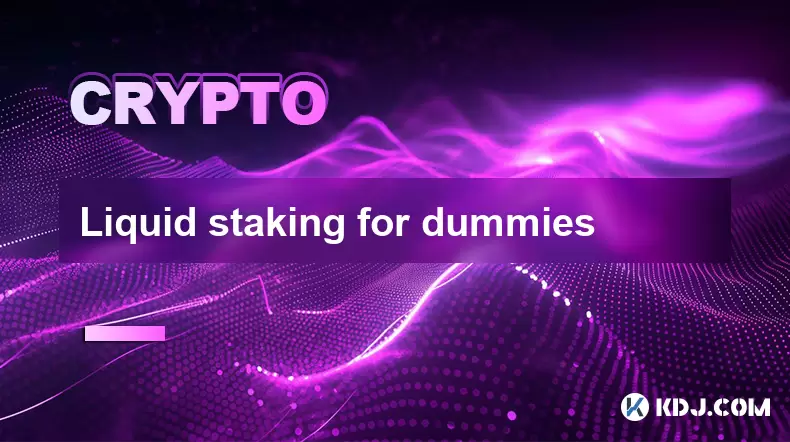
What is Liquid Staking?
Liquid staking refers to a process in the blockchain and cryptocurrency space where users stake their tokens in a proof-of-stake (PoS) network and, in return, receive liquid staking tokens that represent their staked assets. These tokens can be used in other decentralized finance (DeFi) applications while the original tokens remain staked to secure the network. This allows users to maintain liquidity and earn staking rewards simultaneously.
The concept is particularly popular on networks like Ethereum 2.0, where traditional staking locks up ETH for an extended period. Liquid staking solves this problem by providing a tokenized version of the staked asset, enabling users to participate in other financial activities without unstaking.
How Does Liquid Staking Work?
Liquid staking platforms operate by pooling user funds and staking them on the network. In return, users receive liquid tokens that are pegged to the value of the staked asset plus accrued rewards.
- Users deposit their tokens into a liquid staking protocol.
- The protocol stakes the tokens on the network.
- Users receive a tokenized version (e.g., stETH, rETH, or similar) representing their staked assets.
- These tokens can be used in DeFi protocols for lending, borrowing, or yield farming.
The liquid tokens accrue value as staking rewards are earned, and their value increases over time. When users want to unstake, they can either swap their liquid tokens back or wait for a withdrawal period, depending on the protocol.
Popular Liquid Staking Platforms
Several platforms offer liquid staking services, especially for Ethereum. Each has its own mechanism and token representation.
- Lido Finance – One of the most popular liquid staking platforms for Ethereum. It allows users to stake ETH and receive stETH in return.
- Rocket Pool – A decentralized ETH staking platform where users can earn rETH, a token that represents their staked ETH plus rewards.
- Stakewise – Another platform that allows users to stake ETH and receive vETH tokens that can be used across DeFi.
- Binance Liquid Staking – Binance offers a version of liquid staking where users receive staked-BNB (stkBNB) tokens.
Each platform has different fee structures and reward mechanisms, so it’s important to compare them before choosing one.
Benefits of Liquid Staking
Liquid staking offers several advantages over traditional staking.
- Maintains liquidity – Users can still use their staked assets in other DeFi protocols.
- Earns staking rewards – The staked assets continue to earn yield.
- Avoids lock-up periods – Unlike standard staking, users can exit more flexibly using DeFi markets for their liquid tokens.
- Simplifies staking – Users don’t need to run their own validator node or manage technical infrastructure.
One of the key benefits is the composability of liquid staking tokens within the DeFi ecosystem, allowing users to maximize their capital efficiency.
Risks and Considerations
While liquid staking is beneficial, it also comes with risks.
- Smart contract risk – Liquid staking platforms rely on complex smart contracts that may have vulnerabilities.
- Slashing risk – If the underlying staking network penalizes validators, users may lose part of their stake.
- Token depeg risk – In some cases, liquid tokens may trade below their peg, especially during market stress.
- Centralization concerns – Some platforms are centralized or rely on a few validators, which can compromise decentralization.
Users should carefully evaluate the risks before depositing funds, especially considering the platform's reputation, audit status, and total value locked (TVL).
How to Start Liquid Staking
To begin liquid staking, follow these steps:
- Choose a platform – Research and pick a liquid staking provider like Lido, Rocket Pool, or Stakewise.
- Connect a wallet – Use a non-custodial wallet such as MetaMask, Trust Wallet, or WalletConnect.
- Deposit tokens – Approve the transaction and deposit your tokens (e.g., ETH) into the platform.
- Receive liquid tokens – The platform will issue liquid staking tokens (e.g., stETH or rETH).
- Use tokens in DeFi – Deposit them into yield farms, lending protocols, or other DeFi applications to earn additional yield.
Ensure that the platform is compatible with your wallet and the network you're using, and always double-check transaction details before approving.
FAQs
Q: Can I unstake my tokens anytime with liquid staking?
A: You can trade your liquid tokens on DeFi markets or swap them back once the network allows withdrawals, but direct unstaking may require waiting for network upgrades or using third-party liquidity pools.
Q: Are liquid staking tokens the same as stablecoins?
A: No, liquid staking tokens are not stablecoins. Their value increases over time as staking rewards accumulate, unlike stablecoins which are pegged to fiat currencies.
Q: Do I need a minimum amount to start liquid staking?
A: Most platforms do not require a minimum deposit, unlike traditional staking which often requires 32 ETH to run a validator node.
Q: Are there fees for using liquid staking platforms?
A: Yes, platforms typically charge a fee for their service, which comes out of the staking rewards. These fees vary between platforms.
Disclaimer:info@kdj.com
The information provided is not trading advice. kdj.com does not assume any responsibility for any investments made based on the information provided in this article. Cryptocurrencies are highly volatile and it is highly recommended that you invest with caution after thorough research!
If you believe that the content used on this website infringes your copyright, please contact us immediately (info@kdj.com) and we will delete it promptly.
- XRP, Bitcoin, Ripplecoin: Navigating the Crypto Landscape in 2025
- 2025-07-22 20:30:13
- Cardano Ecosystem Watch: Can PayFi Token Remittix Trigger an ADA Overtake?
- 2025-07-22 20:50:13
- JasmyCoin Price Forecast: Chart Analysis Points to Potential Surge
- 2025-07-22 20:55:13
- Remittix, XRP, and Dogecoin: What's Hot in the Crypto Game Right Now?
- 2025-07-22 20:10:14
- BlockchainFX, PEPE, and USDT: What's the Buzz in the Crypto Jungle?
- 2025-07-22 18:50:12
- Ripple's RLUSD: Institutional Backing Fuels Stablecoin Ascent
- 2025-07-22 18:30:12
Related knowledge
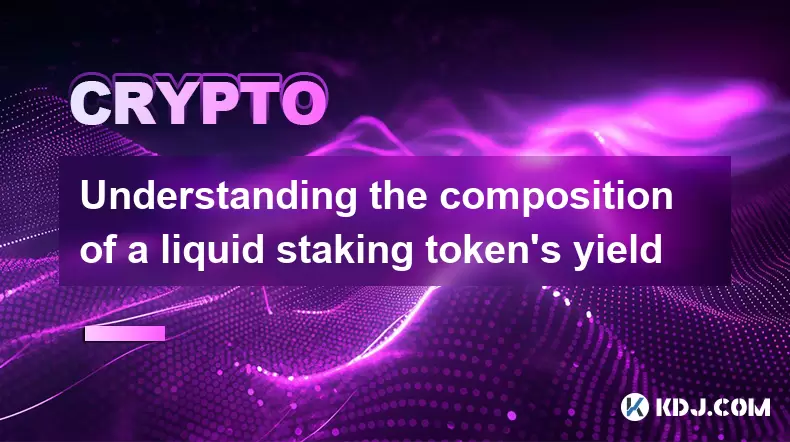
Understanding the composition of a liquid staking token's yield
Jul 20,2025 at 09:07am
What Is a Liquid Staking Token?A liquid staking token is a representative asset issued to users who stake their native cryptocurrency on a proof-of-st...
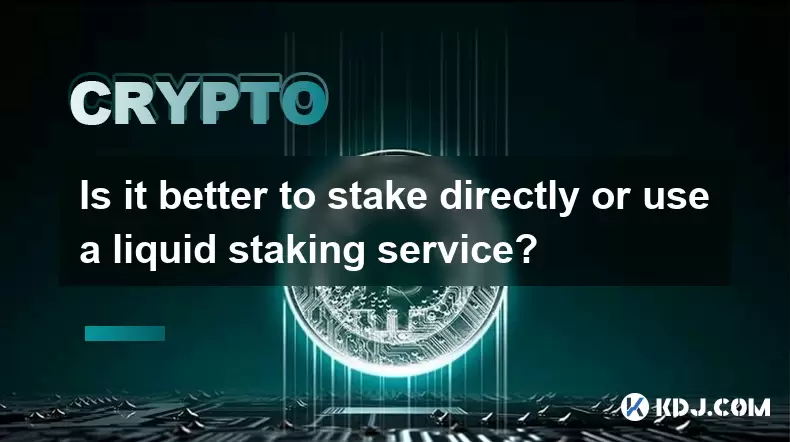
Is it better to stake directly or use a liquid staking service?
Jul 22,2025 at 08:21pm
Understanding the Basics of StakingStaking in the context of blockchain and cryptocurrency refers to the process of locking up digital assets to suppo...

What to do during an LST depeg event
Jul 20,2025 at 04:57pm
Understanding LST Depeg EventsAn LST (Liquid Staking Token) depeg event occurs when the token, which is typically pegged to the value of the underlyin...
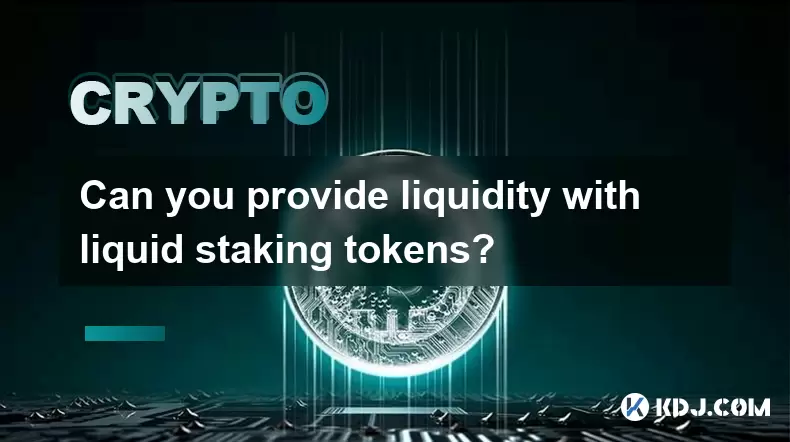
Can you provide liquidity with liquid staking tokens?
Jul 22,2025 at 10:22am
Understanding Liquid Staking TokensLiquid staking tokens (LSTs) are derivative tokens that represent staked assets on a proof-of-stake (PoS) blockchai...

What are the best wallets for storing LSTs?
Jul 21,2025 at 03:14pm
Understanding LSTs and the Need for Secure StorageLSTs, or Liquid Staking Tokens, are derivative tokens representing staked assets on a blockchain. Wh...
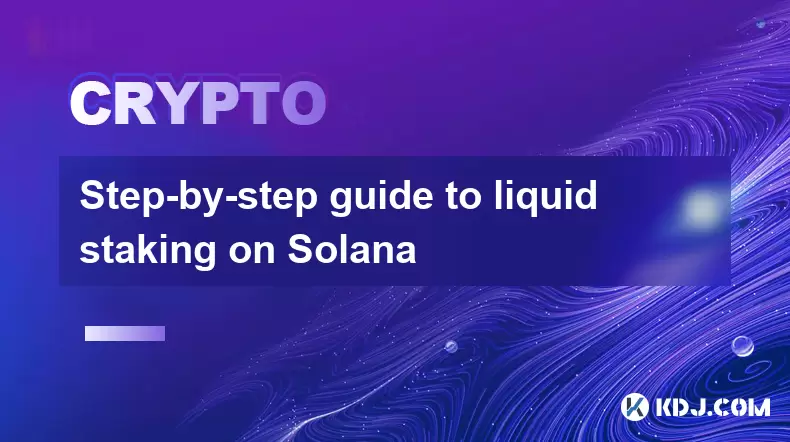
Step-by-step guide to liquid staking on Solana
Jul 20,2025 at 06:42am
What is Liquid Staking on Solana?Liquid staking is a mechanism that allows users to stake their cryptocurrency while retaining liquidity through the i...

Understanding the composition of a liquid staking token's yield
Jul 20,2025 at 09:07am
What Is a Liquid Staking Token?A liquid staking token is a representative asset issued to users who stake their native cryptocurrency on a proof-of-st...

Is it better to stake directly or use a liquid staking service?
Jul 22,2025 at 08:21pm
Understanding the Basics of StakingStaking in the context of blockchain and cryptocurrency refers to the process of locking up digital assets to suppo...

What to do during an LST depeg event
Jul 20,2025 at 04:57pm
Understanding LST Depeg EventsAn LST (Liquid Staking Token) depeg event occurs when the token, which is typically pegged to the value of the underlyin...

Can you provide liquidity with liquid staking tokens?
Jul 22,2025 at 10:22am
Understanding Liquid Staking TokensLiquid staking tokens (LSTs) are derivative tokens that represent staked assets on a proof-of-stake (PoS) blockchai...

What are the best wallets for storing LSTs?
Jul 21,2025 at 03:14pm
Understanding LSTs and the Need for Secure StorageLSTs, or Liquid Staking Tokens, are derivative tokens representing staked assets on a blockchain. Wh...

Step-by-step guide to liquid staking on Solana
Jul 20,2025 at 06:42am
What is Liquid Staking on Solana?Liquid staking is a mechanism that allows users to stake their cryptocurrency while retaining liquidity through the i...
See all articles

























































































